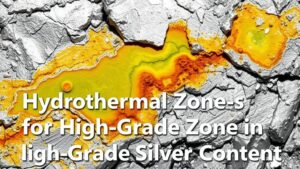Understanding State vs. Federal Jurisdiction on Mining Claims
Understanding State vs. Federal Jurisdiction on Mining Claims
The issue of jurisdiction in mining claims in the United States is complex, involving an intricate interplay between state and federal laws. Understanding the division of jurisdiction is vital for miners, landowners, and legal professionals alike. This article delves into the historical context, current legal framework, and practical implications of state versus federal jurisdiction over mining claims.
Historical Context
The United States has a long history of mining, particularly since the discovery of gold in California in 1848. The General Mining Act of 1872 established a legal framework for mineral exploration and extraction on public lands, setting the tone for federal jurisdiction. This act allowed individuals to stake claims on federal land, significantly influencing state laws regarding mining.
In the ensuing decades, various state regulations emerged to manage mining activities within their borders. While the federal government retained control over the ownership and administration of mineral resources on public lands, states gained jurisdictional authority over local mining operations and environmental regulations. This historical dynamic laid the foundation for the dual jurisdictional approach we see today.
Federal Jurisdiction on Mining Claims
Under federal law, mining claims are primarily governed by the General Mining Act of 1872, which allows individuals to locate and extract minerals on federal lands. Only the following elements need to be satisfied for a mining claim to be valid:
- The mineral must be locatable–common minerals such as gold, silver, copper, and others fall under this category.
- The claimant must comply with the filing procedures as dictated by federal law.
Federal jurisdiction includes the management and regulation of mining operations, particularly on public lands administered by agencies such as the Bureau of Land Management (BLM). For example, in the case of United States v. 46.14 Acres of Land, 11 F.3d 1039 (1993), the court reaffirmed the federal governments expansive authority over mining claims on public lands, establishing that federal law governs the extraction and management of those resources.
State Jurisdiction on Mining Claims
While federal law provides a framework for mining claims on federal lands, state laws also play a crucial role in regulating mining activities. States have the authority to enact laws and regulations for mining operations, especially regarding environmental impacts, safety, and operational permits. For example:
- States may impose mandatory permitting processes that address environmental concerns, such as those outlined in the National Environmental Policy Act (NEPA).
- State regulations often require specific reclamation plans to restore land post-mining, which vary significantly by state.
An example of state jurisdiction in action is found in the case of City of Los Angeles v. Lyon, 29 Cal. 2d 305 (1946), where the California Supreme Court upheld the state’s authority to impose zoning restrictions on mining activities to protect public welfare, thereby reinforcing the role of state laws in managing mining operations.
Interplay Between State and Federal Jurisdiction
The relationship between state and federal jurisdiction is not always harmonious, often leading to conflicts that can complicate mining operations. Federal preemption can occur when federal laws supersede state laws. This was evident in the case of Silvers v. Dillard, 35 F.2d 334 (9th Cir. 1929), where federal regulations were deemed to override conflicting state regulations.
Also, some mining operations may require adherence to both sets of laws. For example, a mining operation on federally controlled land must comply with the BLM regulations while also adhering to state environmental regulations. This dual compliance can create operational challenges for companies navigating the regulatory landscape.
Practical Implications for Miners
Understanding the dual nature of jurisdiction is essential for individuals and companies engaged in mining. e are key takeaways for stakeholders:
- Miners should conduct thorough due diligence to understand the legal requirements at both the state and federal levels to avoid potential legal challenges.
- Engaging with local regulatory agencies can facilitate smoother operational processes and ensure compliance with applicable laws.
- Staying informed about changes in legislation, such as emerging environmental regulations, is crucial to maintaining legal adherence and operational integrity.
Conclusion
To wrap up, the jurisdiction over mining claims in the United States is characterized by a dual system where both state and federal laws govern various aspects of mining activities. The historical evolution of these laws, coupled with current regulatory frameworks, demonstrates the significance of understanding jurisdictional boundaries. By engaging with both state and federal regulations, miners can navigate the complex legal landscape efficiently and responsibly.


